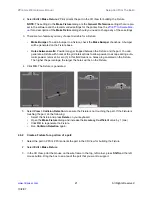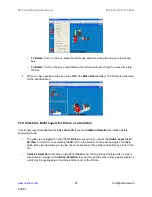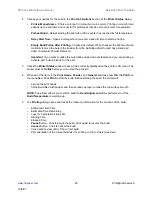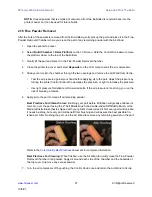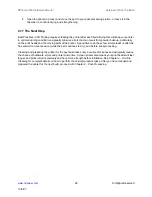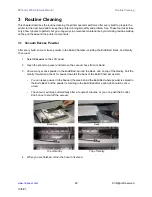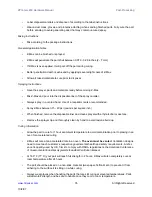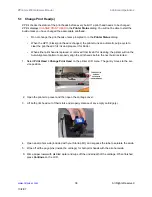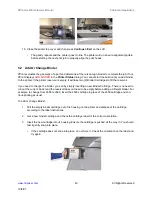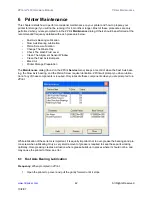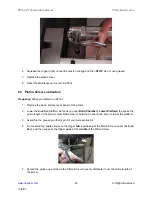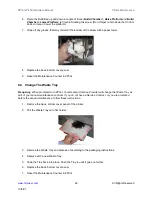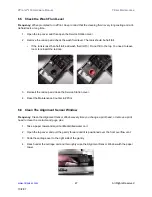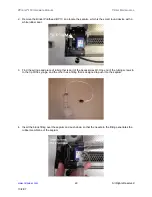
ZPrinter
®
450 Hardware Manual
Post-Processing
35
All Rights Reserved
10/2/07
•
Label disposal materials and dispose of according to the label instructions.
•
Wear a dust mask, gloves, and protective clothing when sanding finished parts. Fully cure the part
before sanding to avoid generating dust that may contain uncured epoxy.
Mixing Instructions
•
Mix according to the package instructions.
General Application Notes
•
Z-Max can be brushed or sprayed.
•
Z-Max will penetrate the part shell between 0.079 - 0.28 inches (2 - 7 mm).
•
If Z-Max is over-applied, it will pool off the part during curing.
•
Better penetration depth is achieved by applying several light coats of Z-Max.
•
Allow all mixed materials to cure prior to disposal.
Spraying Instructions
•
Have the sprayer, parts and materials ready before mixing Z-Max.
•
Mix Z-Max and pour into the disposable liner of the spray canister.
•
Always spray in a vented hood. Use of a respirator is also recommended.
•
Spray Z-Max between 15 - 20 psi (pounds per square inch)
•
When finished, remove the disposable liner and clean sprayer with ethyl alcohol or acetone.
•
Remove the sprayer tip and thoroughly clean by hand to avoid residue build up.
Curing Information
•
Allow the part to cure for 1 hour at ambient temperature to avoid discoloration prior to placing in an
oven for accelerated curing.
•
Z-Max will cure at an accelerated rate in an oven.
The oven must be vented.
Ventilation designs
need to meet each customer’s respective governmental health and safety requirements. A refer-
ence frequently used by U.S. firms to comply with OSHA regulations is the
American Conference
of Governmental Industrial Hygienists Industrial Ventilation Manual.
•
At 160
°
F (71
°
C) your part will reach full strength in 2 hours. Z-Max will also completely cure at
room temperature after 24 hours.
•
The part should be placed on a non-stick, material (wax paper, Teflon®, etc.) to prevent it from
adhering to the surface it is sitting on while curing.
•
Always wear gloves when handling the parts that are still curing at elevated temperatures. Parts
will attain full strength and be safe to handle once they cool to room temperature.

